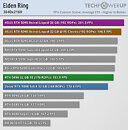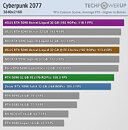
Sudokoo x TechPowerUp SuperUser SuperCool Thermal Upgrade Giveaway: The Winners!
Sudokoo and TechPowerUp brought our readers from the United States the SuperUser SuperCool Thermal Upgrade Giveaway. Up for grabs were five of Sudokoo's premier AIO liquid CPU coolers and tower-type air coolers. Specifically, the Sudokoo Proteus 360 is a flagship AIO CLC with features such as a large true-color display that can be made to put out just about any information; and a compound fan that's designed to minimize cable clutter; while the SK700V Digital is a heavy air-type cooler with a top-plate that has an LED segment display that puts out useful system monitoring info. We thank our readers for the response. Without further ado, here are the Winners!
The following two winners get a Sudokoo Proteus 360, each:
The following two winners get a Sudokoo Proteus 360, each:
- Omar S.
- devouredrage
- Mwardx2My
- Juuso O.
- redstormpopcorn
































































